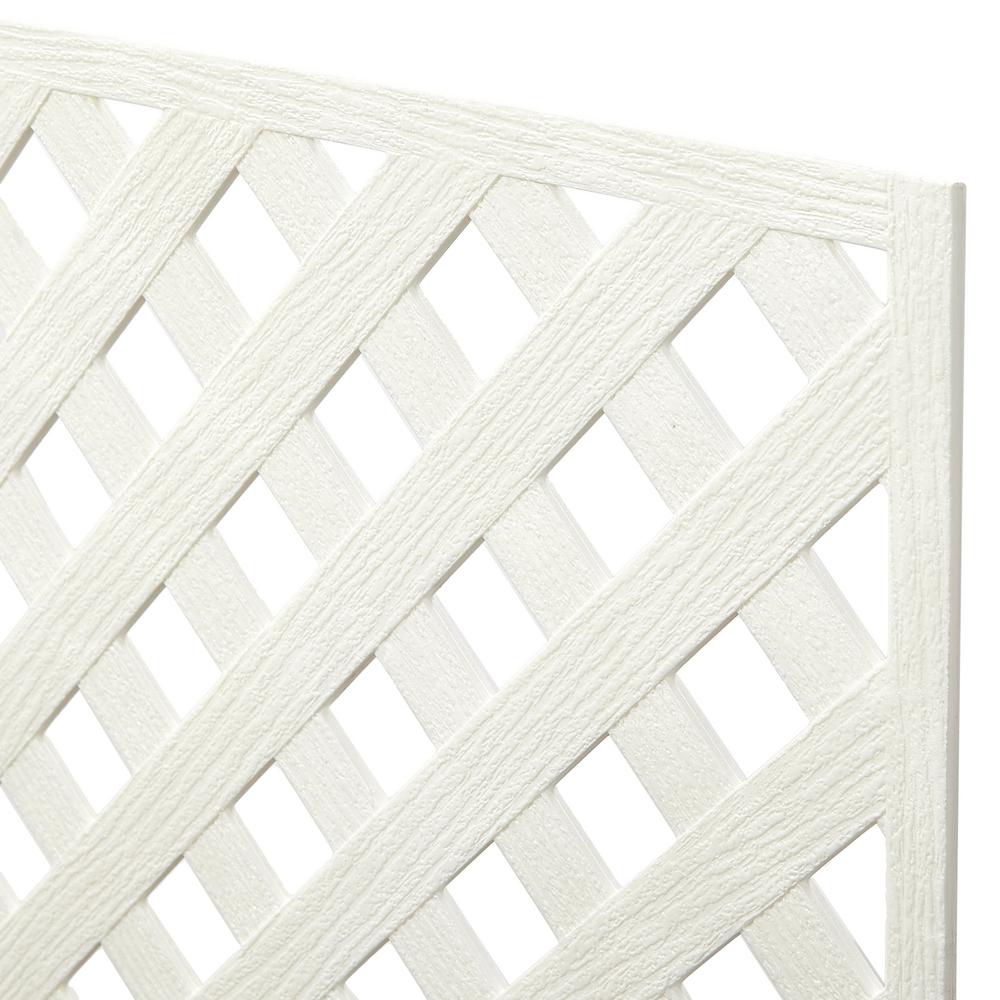

This will hold the panels in place until they are all up. When installing the PVC panels, set them in place and insert only three screws along the top of each panel.

Make sure that the panel is level both vertically and horizontally. The alignment of the first panel is critical. Deck screws are preferable because they do not require painting and are designed not to rust. The panels are installed by fastening them to the framework using staples or deck screws. If water-based paint is used as a primer, the chemicals in the pressure treated wood will leech through the final coat of paint. Always use an oil-based primer when painting pressure treated wood. The framework can be painted to blend or contrast with the PVC panels. The framework should be painted prior to installing the vinyl lattice fence panels. The top of the top rail should be mounted 4 feet above the ground. The bottom of the bottom rail should be mounted 6 to 12 inches from the ground. The frame requires top and bottom rails for mounting the vinyl fence panel. The framework of the fence is created by attaching 2 x 6 inch pressure treated rails between the posts using fence rail mounts (inexpensive hardware available at local hardware stores). The fence posts must be braced while the concrete is hardening, so they do not move. Both methods require the same concrete set-up time. Pour approximately two bags of powdered concrete into each hole, and thoroughly soak each hole with water. The second method is much easier and less expensive. If it is a large job, another option is to hire a cement truck to bring pre-mixed concrete to the jobsite. The cement is mixed by hand in a wheel barrow, and poured into each post hole. The cement can be poured directly into the post hole as a premixed liquid. There are two methods for cementing the post holes.
#Vinyl lattice install#
Install the posts so that 5 feet of post is exposed above ground when finished. Most installers use a string level to ensure the straightness of the fence line during this process. The post holes should be dug in-line and spaced at 8 foot intervals. Post holes can be dug by hand or by using a gas powered post-hole digger. The deeper the post hole, the stronger the fence. Depending on wind load requirements and local soil conditions, post-hole depths can range from 18 to 36 inches. 4 x 4 inch pressure treated posts, cemented into the ground, create a stable base. Vinyl lattice fencing requires a foundation on which the framework is mounted.


 0 kommentar(er)
0 kommentar(er)
